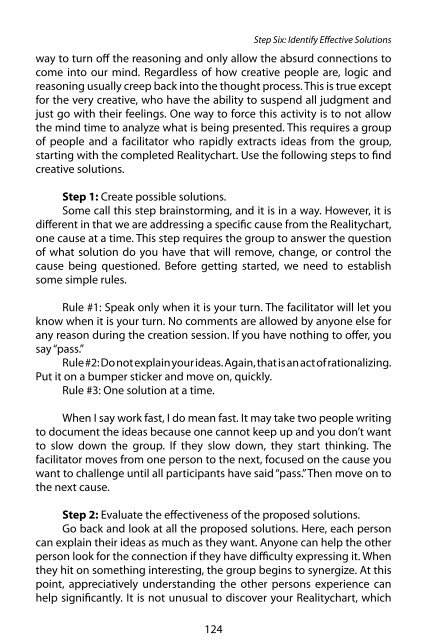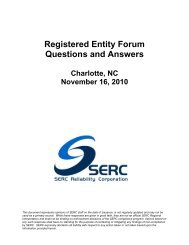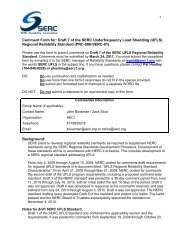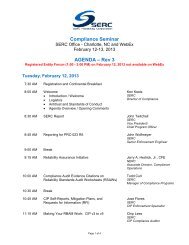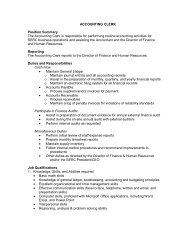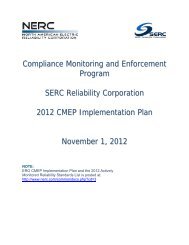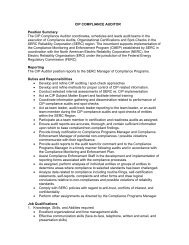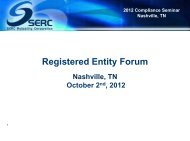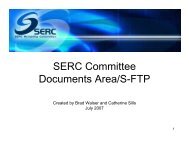RealityCharting e-book .pdf - SERC Home Page
RealityCharting e-book .pdf - SERC Home Page
RealityCharting e-book .pdf - SERC Home Page
- No tags were found...
Create successful ePaper yourself
Turn your PDF publications into a flip-book with our unique Google optimized e-Paper software.
124<br />
Step Six: Identify Effective Solutions<br />
way to turn off the reasoning and only allow the absurd connections to<br />
come into our mind. Regardless of how creative people are, logic and<br />
reasoning usually creep back into the thought process. This is true except<br />
for the very creative, who have the ability to suspend all judgment and<br />
just go with their feelings. One way to force this activity is to not allow<br />
the mind time to analyze what is being presented. This requires a group<br />
of people and a facilitator who rapidly extracts ideas from the group,<br />
starting with the completed Realitychart. Use the following steps to find<br />
creative solutions.<br />
Step 1: Create possible solutions.<br />
Some call this step brainstorming, and it is in a way. However, it is<br />
different in that we are addressing a specific cause from the Realitychart,<br />
one cause at a time. This step requires the group to answer the question<br />
of what solution do you have that will remove, change, or control the<br />
cause being questioned. Before getting started, we need to establish<br />
some simple rules.<br />
Rule #1: Speak only when it is your turn. The facilitator will let you<br />
know when it is your turn. No comments are allowed by anyone else for<br />
any reason during the creation session. If you have nothing to offer, you<br />
say “pass.”<br />
Rule #2: Do not explain your ideas. Again, that is an act of rationalizing.<br />
Put it on a bumper sticker and move on, quickly.<br />
Rule #3: One solution at a time.<br />
When I say work fast, I do mean fast. It may take two people writing<br />
to document the ideas because one cannot keep up and you don’t want<br />
to slow down the group. If they slow down, they start thinking. The<br />
facilitator moves from one person to the next, focused on the cause you<br />
want to challenge until all participants have said “pass.” Then move on to<br />
the next cause.<br />
Step 2: Evaluate the effectiveness of the proposed solutions.<br />
Go back and look at all the proposed solutions. Here, each person<br />
can explain their ideas as much as they want. Anyone can help the other<br />
person look for the connection if they have difficulty expressing it. When<br />
they hit on something interesting, the group begins to synergize. At this<br />
point, appreciatively understanding the other persons experience can<br />
help significantly. It is not unusual to discover your Realitychart, which


